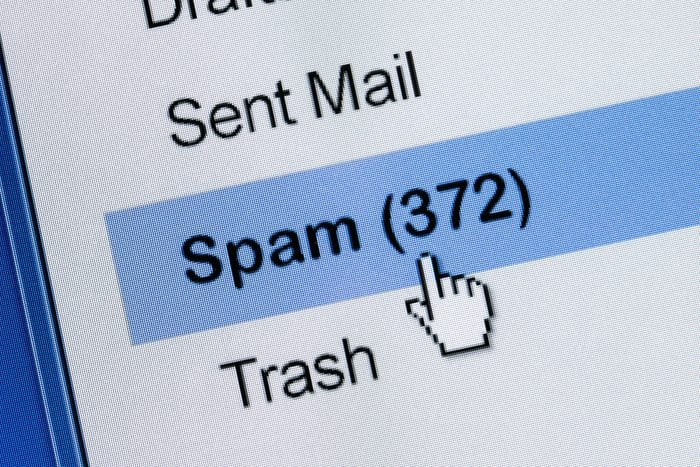Just a few short years ago, most of us were burdened with our inboxes clogged up with spammy emails. But nowadays, thanks to sophisticated algorithms and advances in email deliverability science, it’s becoming increasingly easier for businesses to get their legitimate emails into the inbox– without being marked as spam.
Email deliverability refers to the ability of an email to reach its intended recipient’s inbox. It is an essential aspect of email marketing, and its importance cannot be overstated. According to recent statistics, email marketing has a higher ROI than any other form of digital marketing, making it a vital tool for businesses of all sizes. However, if emails don’t reach their intended recipients, all efforts put into crafting a perfect email can go to waste.
Statistics show that only 79% of emails sent by the average marketer arrive in the recipients’ inboxes, while 21% are either sent to spam or not delivered at all. This percentage can be even lower for specific industries, such as the finance industry, which has an email deliverability rate of 77.2%.
This article aims to educate readers on email deliverability and its importance while offering a comprehensive guide on how to get emails to the top of recipients’ inboxes. We’ll explore various aspects that contribute to email deliverability, such as email authentication, list hygiene, and email content. We’ll also provide tips on how to avoid spam filters and get your emails to land in the primary inbox.
By the end of this article, you’ll have a better understanding of email deliverability, the challenges that come with it, and how to improve your email campaigns’ success rate. So, let’s dive in.
The Science of Email Deliverability
When it comes to email deliverability, there are a number of factors that can have a significant impact on whether or not your emails make it to the inbox. Three of the most important of these factors include the sender reputation, spam filters, and ISP rules and regulations.
Sender reputation is essentially a measure of how email recipients view the emails that you send. This can be influenced by a number of different factors, including the quality of the content you are sending, the frequency of your emails, and how engaged your audience is with the messages you are sending. If your sender reputation is strong, it is more likely that your emails will be received positively and make it to the inbox.
Spam filters are another critical factor that can impact email deliverability. These filters are designed to prevent unwanted or unsolicited email from making it to recipients’ inboxes. If your email is flagged as spam, it is likely to be blocked or filtered out by the recipient’s email client. While some spam filters are more sophisticated and accurate than others, all of them rely on a number of different criteria to determine whether or not an email is spam. These may include the subject line, body content, sender address, and more.
Finally, ISP rules and regulations can also play a significant role in determining whether or not your emails make it to the inbox. Different ISPs have different policies and procedures in place for filtering out unwanted or unsolicited email. These may include rules around things like email volume, content, and even user engagement. By understanding these rules and regulations, you can work to ensure that your emails are more likely to make it through the filters and into the inbox.
Common Email Deliverability Issues
When it comes to email deliverability, there are several issues that businesses and individuals need to be aware of to ensure their emails arrive in the inbox of intended recipients. In this article, we will explore four common email deliverability issues that can impact email campaigns.
A. Bounces and blocks
Bounces and blocks occur when an email is returned to the sender or blocked by the receiving email server. This can happen for a variety of reasons, such as an invalid email address, a full mailbox, or anti-spam software detecting suspicious content. To minimize bounces and blocks, it’s important to maintain up-to-date email lists, use clean formatting, and avoid spam trigger words in the subject line and body of emails.
B. Spam complaints
Spam complaints occur when recipients mark an email as spam, indicating that they did not give permission for the sender to email them or that the content was unwanted. Spam complaints can negatively impact email deliverability, leading to emails being flagged as spam by email filters. To avoid spam complaints, it’s essential to have explicit consent from recipients and to only send relevant, high-quality content.
C. Blacklists
Blacklists are lists of IP addresses and domains that are known for sending spam or other unwanted emails. Email servers may check these blacklists when determining whether to deliver an email to a recipient’s inbox. Being put on a blacklist can greatly harm your email reputation and decrease deliverability. To avoid being blacklisted, it’s important to maintain proper email sending practices, avoid sending to inactive or outdated email addresses, and regularly check for blacklisting.
D. Importance of metrics
To ensure optimal email deliverability, it’s important to track and analyze metrics related to your email campaign. This may include open rates, click rates, bounce rates, and spam complaint rates. By monitoring these metrics, you can identify problem areas and make adjustments to your email strategy to improve deliverability. Additionally, by examining user engagement with your emails, you can improve your campaigns over time and achieve higher engagement rates.
In conclusion, email deliverability is a complex field that requires attention to detail and ongoing analysis. By understanding and addressing common deliverability issues such as bounces, spam complaints, and blacklists, while also monitoring metrics related to email campaigns, businesses and individuals can ensure their emails land in the inbox of those who want to receive them.
How to Improve Email Deliverability
Email marketing is an effective way for businesses to connect with their target audience, but achieving optimal results depends on the emails reaching the recipients’ inbox. However, with the constant evolution of filters and spam detection systems, getting emails past the filters can be like navigating a minefield. This is why it’s essential to consider ways to improve email deliverability to ensure that your email campaigns are successful.
A. Sender reputation
One primary factor that affects email deliverability is sender reputation. Internet service providers (ISPs) prioritize emails from reputable senders, and their algorithm analyzes a sender’s track record to determine how reliable they are. Email authentication protocols such as SPF, DKIM, DMARC, and BIMI support sender reputation by assuring the recipient inbox that the email is legitimate and not from a spoofed source. They help prevent emails from being sent to the spam folder.
Consistency is also crucial in email activity. If a sender goes long periods without sending any emails, the ISP assumes that the email address is no longer active and may regard their future messages as spam.
B. Spam filters
Spam filters are email clients’ subscribers use to flag and delete emails. To avoid getting flagged as spam, email marketers need to conduct regular content reviews to ensure that message content aligns with best practices for email content to avoid overuse of spam keywords and excessive URL links. Emails should also be personalized to the recipient’s interests and contain valuable content.
Maintaining subscriber engagement is essential in email marketing. It is essential to segment the email list effectively, analyzing the customer’s behaviour, and using automation to send targeted messages that address their specific pain points. Including a clear and straightforward unsubscribe option in your emails will help prevent individuals from marking your emails as spam.
C. List hygiene
One of the most critical steps you can take to improve your email deliverability is to ensure that your list is clean and hygienic.
This means regularly removing inactive subscribers who no longer engage with your content or who have marked your emails as spam in the past. Inactive subscribers can weigh down your email campaign’s success rate and negatively impact your sender reputation, making it more difficult to reach your active subscribers.
In addition, it’s essential to embrace permission-based marketing, which means only sending emails to people who have explicitly given you permission to do so. This not only ensures that you’re sending messages to people who are likely to be interested in your content, but it also helps to build trust with your audience and keep your sender reputation in good standing.
D. Working with ISPs
Another crucial element of improving email deliverability is working with internet service providers (ISPs) to ensure that your messages get through their spam filters and into your customers’ inboxes. This means monitoring email metrics like open rates, click-through rates, and spam complaints, and using this data to fine-tune your campaigns for maximum effectiveness.
Finally, maintaining a positive sender reputation is essential for getting your emails to the top of your subscribers’ inboxes. This includes consistently providing high-quality content, avoiding spammy practices like using misleading subject lines or sending unsolicited messages, and keeping your list hygienic and up-to-date.
E. Use Email warm up servise
One of the most effective ways to ensure that your emails land in your subscriber’s inbox is to use an email warm-up service.
An email warm-up service is a tool that helps your emails build trust with email service providers (ESPs) like Google, Yahoo, and Outlook. These ESPs use complex algorithms to determine whether an email should land in the inbox or spam folder. Unfortunately, even if your emails are valuable and well-crafted, there’s still a risk that they could be flagged as spam and never make it to your subscriber’s inbox.
An email warm-up service like Warmy.io works by gradually introducing your emails to ESPs in a way that builds trust and credibility over time. This is done by gradually increasing the volume and frequency of emails that you send, starting with a small pool of recipients and gradually expanding as your sender reputation improves. This approach helps to prevent your emails from being flagged as spam by over-eager spam filters and ensures that they reach your target audience’s inbox.
Using an email warm-up service comes with a host of benefits. For starters, it dramatically increases the chances of your email being delivered – and not just to the spam folder. In addition, effective use of an email warm-up service can help to establish a strong sender reputation and reduce the chances of your emails getting flagged as spam in the future. This, in turn, can impact the deliverability of all your future emails.
Conclusion:
To improve your email deliverability and increase the effectiveness of your email marketing campaigns, it’s crucial to implement best practices consistently. By doing so, you’ll build trust with your subscribers, increase engagement rates, and ultimately achieve better ROI. Don’t hesitate to seek expert guidance if you need help in setting up and optimizing your email campaigns.








